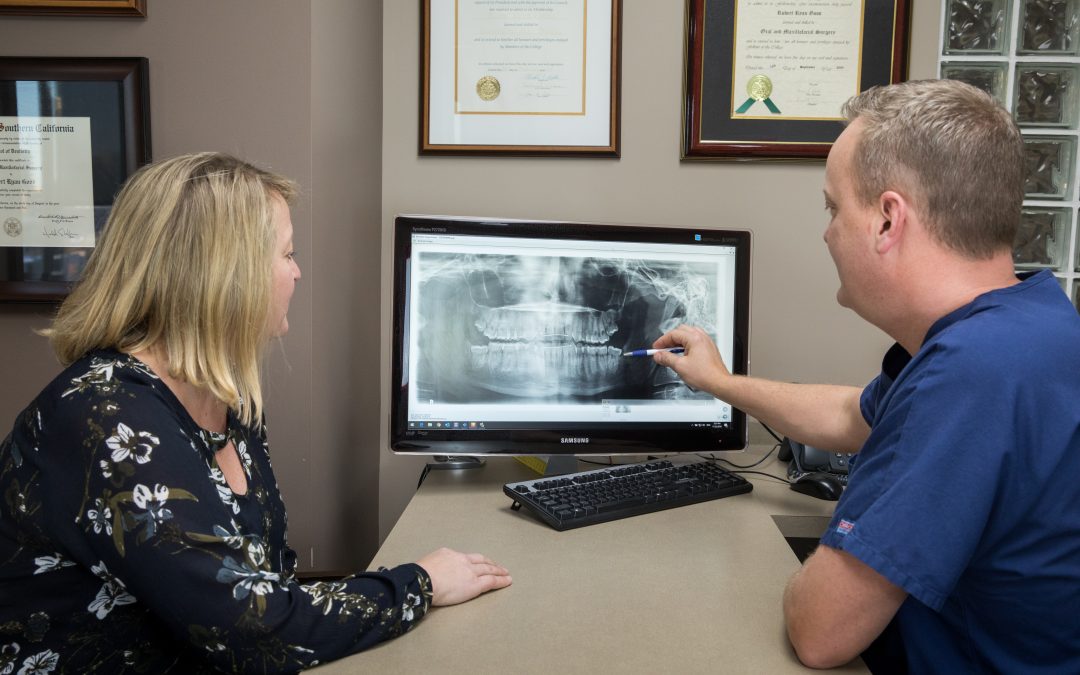Restore and minimize the appearance of sagging cheeks and jowls.
Oral surgeons can correct underlying causes such as missing teeth and jaw bone loss.
Book a consultation
*Required Field
More comfort, more smiles
A promise from Mission Oral Surgery team
Our top-most priority is you – your health, safety, and comfort. From the initial diagnosis to after-treatment care, we’ll walk you through every step to ensure you’re comfortable.
At your visits, we aim to give you:
● A relaxed and stress-free experience
● A full understanding of your conditions and treatments options
● A clear walk you through of your treatment process
● The best care possible.
Here, you will find comfort when you need it most.
Trusted by:




Want more info or would like to meet the doctors first?
What causes sagging cheeks?
OVERVIEW
Missing teeth often contribute to the appearance of sunken cheeks or jowls. When one or more teeth are missing it can lead to bone loss at the site of the gap. Normally, teeth are anchored to the jaw bone by sockets. However, if those sockets remain empty, that means there are large, empty spaces in the jaw.
The jaw bone greatly contributes to the structure of the face. In the same way that muscles are maintained through exercise, bone tissue is maintained by use. Natural teeth are embedded in the jaw bone and stimulate the jaw bone through activities such as chewing and biting.
When teeth are missing, the alveolar bone, or the portion of the jaw bone that anchors the teeth into the mouth, no longer receives the necessary stimulation it needs and begins to break down, or resorb. The body no longer uses or “needs” the jaw bone, so it deteriorates.

Jaw bone health
IMPORTANCE OF REPLACING MISSING TEETH
Aside from a collapsed facial profile, here are other potential consequences of jaw bone loss:
- Problems with remaining teeth, including misalignment, drifting, loosening, and loss
- Limited lip support
- Skin wrinkling around the mouth
read more...
- Distortion of other facial features
- Jaw (TMJ or temporomandibular joint) pain, facial pain, and headaches
- Difficulty speaking and communicating
- Inadequate nutrition as a result of the inability to chew properly and painlessly
- Sinus expansion
Reasons for jaw bone loss and deterioration
The following are the most common causes for jaw bone deterioration and loss that may require a bone grafting procedure:
Tooth extractions
The rate that the bone deteriorates, as well as the amount of bone loss that occurs, varies greatly among individuals. However, most loss occurs within the first eighteen months following the extraction and will continue gradually throughout your life.
Unanchored dentures/bridgework
Unanchored dentures are placed on top of the gum line, but they do not provide any direct stimulation to the underlying jaw bone. Over time the lack of stimulation causes the bone to resorb and deteriorate. Because this type of denture relies on the bone to hold them in place, people often experience loosening of their dentures and problems eating and speaking.
Eventually, bone loss may become so severe that dentures cannot be held in place with strong adhesives, and a new set of dentures may be required. Proper denture care, repair, and refitting are essential to maintaining oral health.
read more...
Some dentures are supported by anchors, which do help adequately stimulate, and therefore preserve bone.
With bridgework, the teeth on either side of the appliance provide sufficient stimulation to the bone, but the portion of the bridge that spans the gap where the teeth are missing receives no direct stimulation. Bone loss can occur in this area.
By completing a bone graft procedure, Drs. Edwards and Goos is now able to restore bone function and growth, thereby halting the effects of poor denture care.
Periodontal Disease
Periodontal diseases are ongoing infections of the gums that gradually destroy the support of your natural teeth. Periodontal disease affects one or more of the periodontal tissues: alveolar bone, periodontal ligament, cementum, or gingiva.
While there are many diseases that affect the tooth-supporting structures, plaque-induced inflammatory lesions make up the majority of periodontal issues and are divided into two categories: gingivitis and periodontitis. While gingivitis, the less serious of the diseases, may never progress into periodontitis, it always precedes periodontitis.
Dental plaque is the primary cause of gingivitis in genetically-susceptible individuals. Plaque is a sticky colourless film, composed primarily of food particles and various types of bacteria, that adheres to your teeth at and below the gum line. Plaque constantly forms on your teeth, even minutes after cleaning. Bacteria found in plaque produces toxins, or poisons, that irritate the gums. Gums may become inflamed, red, swollen, and bleed easily. If this irritation is prolonged, the gums will separate from the teeth causing pockets (spaces) to form. If daily brushing and flossing is neglected, plaque can harden into a rough, porous substance known as calculus (or tartar). This can occur both above and below the gum line.
Periodontitis is affected by bacteria that adheres to the tooth’s surface, along with an overly aggressive immune response to these bacteria. If gingivitis progresses into periodontitis, the supporting gum tissue and bone that hold teeth in place deteriorates. The progressive loss of this bone, the alveolar, can lead to the loosening and subsequent loss of teeth.
Trauma
When a tooth is knocked out or broken to the extent that no biting surface is left below the gum line, bone stimulation stops, which results in jaw bone loss. Some common forms of tooth and jaw trauma include: teeth knocked out from injury or accident, jaw fractures, or teeth with a history of trauma that may die and lead to bone loss years after the initial trauma.
A bone grafting procedure would be necessary to reverse the effects of bone deterioration, restoring function and promoting new bone growth in traumatized areas.
Misalignment
Misalignment issues can create a situation in the mouth where some teeth no longer have an opposing tooth structure. The unopposed tooth can over-erupt, causing deterioration of the underlying bone.
Issues such as TMJ problems, normal wear-and-tear, and lack of treatment can also create abnormal physical forces that interfere with the teeth’s ability to grind and chew properly. Over time, bone deterioration can occur where the bone is losing stimulation.
Osteomyelitis
Osteomyelitis is a type of bacterial infection in the bone and bone marrow of the jaw. This infection leads to inflammation, which can cause a reduction of blood supply to the bone. Treatment for osteomyelitis generally requires antibiotics and the removal of the affected bone. A bone graft procedure may be required to restore bone function and growth lost during removal.
Tumors
Benign facial tumors, though generally non-threatening, may grow large and require the removal of a portion of the jaw. Malignant mouth tumors almost always spread into the jaw, requiring the removal of the affected section of the jaw. In both cases, reconstructive bone grafting is usually required to help restore normal function to the jaw. Grafting in patients with malignant tumors may be more challenging because treatment of the cancerous tumor generally requires removal of the surrounding soft tissues as well.
Developmental Deformities
Some conditions or syndromes are characterized by missing portions of the teeth, facial bones, jaw or skull. Drs. Edwards and Goos may be able to perform a bone graft procedure to restore bone function and growth where it may be absent.
Sinus Deficiencies
When molars are removed from the upper jaw, air pressure from the air cavity in the maxilla (maxillary sinus) causes resorption of the bone that formerly helped keep the teeth in place. As a result, the sinuses become enlarged, a condition called hyperpneumatized sinus.
This condition usually develops over several years and may result in insufficient bone from the placement of dental implants. Drs. Edwards and Goos can perform a procedure called a “sinus lift” that can treat enlarged sinuses.
How to help restore sunken cheeks and jowls
If you’re experiencing premature signs of aging due to missing teeth or jaw bone issues, our oral surgeon can restore the structural integrity of your face.
With dental implants, you will have the foundation for replacement teeth that look, feel, and function like natural teeth. You can regain the ability to eat virtually anything, knowing that teeth appear natural and that facial contours will be preserved. Patients with dental implants can smile with confidence.
For patients with severe jaw bone loss, we may suggest bone grafting to ensure you are a candidate for dental implants or to improve the outcome of the treatmen.
With bone grafting we now have the opportunity to not only replace bone where it is missing, but we also have the ability to promote new bone growth in that location. This not only gives us the opportunity to place implants of proper length and width, it also gives us a chance to restore functionality and aesthetic appearance.
Read more about dental implants here.
Read more about bone grafting here.
Fix your sagging cheeks now with Mission Oral Surgery
A non-surgical facelift can help you feel more confident if you have sagging cheeks. It can greatly improve the appearance of your face, as well as stop any more premature signs of aging from appearing as they relate to the jawbone.
Mission Oral Surgery aims to provide the best possible care to every patient by making them feel safe, informed, and comfortable. We have a real understanding of your condition and can help you address the concerns that matter to you. If you would like a non-surgical facelift, consider getting dental implants from our team.
Contact us today to set up a meet and greet if you would like more information.
Helpful articles

Are You a Candidate for Dental Implant Therapy?
Losing a tooth at five years old can be an exciting part of growing up; it is a great opportunity for parents to teach children about development and, just maybe, saving a dollar or two! Losing a tooth as an adult is, unfortunately, slightly less enjoyable....

Are You a Candidate for Dental Implant Therapy?
Losing a tooth at five years old can be an exciting part of growing up; it is a great opportunity for parents to teach children about development and, just maybe, saving a dollar or two! Losing a tooth as an adult is, unfortunately, slightly less enjoyable....

Are You a Candidate for Dental Implant Therapy?
Losing a tooth at five years old can be an exciting part of growing up; it is a great opportunity for parents to teach children about development and, just maybe, saving a dollar or two! Losing a tooth as an adult is, unfortunately, slightly less enjoyable....
Book your appointment now
*Required Field